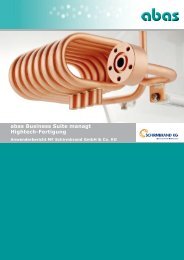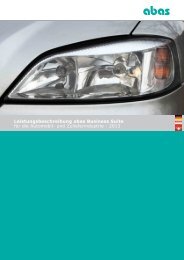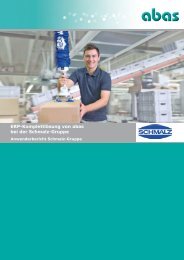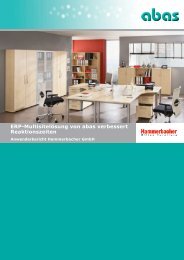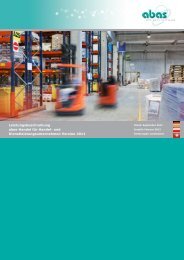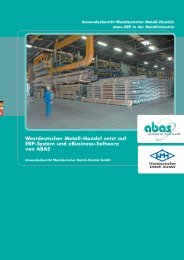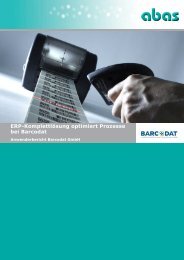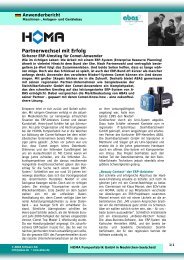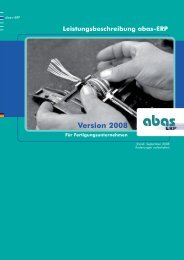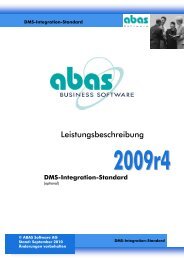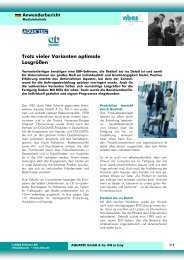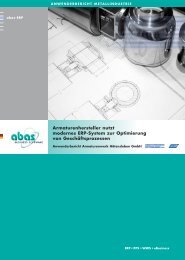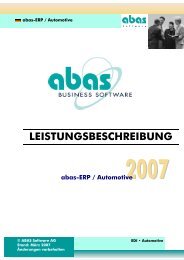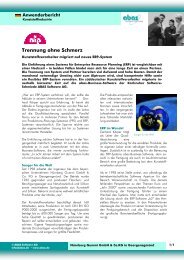Version 2008 - ABAS Software AG
Version 2008 - ABAS Software AG
Version 2008 - ABAS Software AG
Create successful ePaper yourself
Turn your PDF publications into a flip-book with our unique Google optimized e-Paper software.
3.15. Fixed asset accounting<br />
The fixed assets module of abas ERP is used in a flexible manner to<br />
manage the company's fixed assets on an inventory basis - regardless of<br />
the sector of industry. All evaluations required for the year-end closing<br />
are included, e.g. the fixed assets movement schedule.<br />
Imputed depreciations can be carried out in addition to the tax<br />
depreciations The fixed asset accounting is integrated in the financial<br />
accounting and cost accounting by abas ERP. Fixed assets are, for<br />
example, posted directly via financial entries and the imputed<br />
depreciations are adopted into cost accounting via statistical entries. A<br />
large amount of relevant data and figures can be extracted from the<br />
system and a useful overview covering quantity and quality can be<br />
created at any time for the existing fixed assets. The fixed asset<br />
accounting module has been developed for the German fiscal law. If it<br />
can be used under different legal norms has to be examined case by<br />
case. However, it is already used in some other countries.<br />
3.15.1. Fixed assets<br />
Fixed assets are the heart of the fixed asset accounting. Assets are<br />
defined, prepared for evaluation and created (all evaluations are created<br />
via the fixed assets) using the "Fixed asset" records. Data relating to<br />
acquisitions, depreciation, retirement and transaction figures is displayed<br />
and administrated in the fixed asset record, in addition to the general<br />
properties.<br />
Different depreciation procedure for each set of books<br />
Several sets of books can be used in one client in order to create<br />
financial reports according to different accounting regulations, e.g. HGB<br />
or IAS/IFRS. As the fixed assets can be depreciated in different ways in<br />
each accounting regulation, a different depreciation procedure can be<br />
defined for each set of books in the fixed asset.<br />
For each depreciation method you can, for example, define the method<br />
of depreciation, the useful life and the depreciation start. The acquisition<br />
and production costs can be adopted and posted in different ways for<br />
each set of books. The account assignment for the fixed assets is the<br />
same for all sets of<br />
books.<br />
114/140<br />
<strong>2008</strong><br />
<strong>2008</strong>



